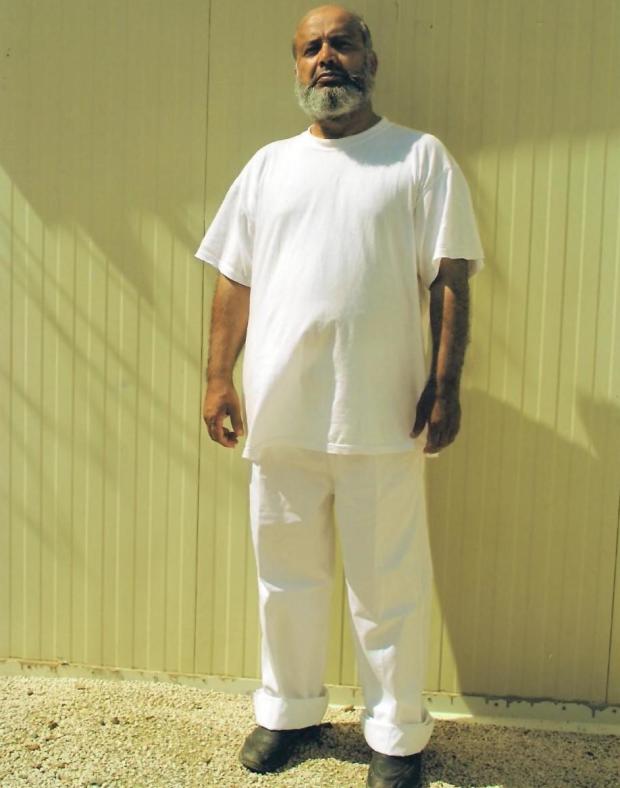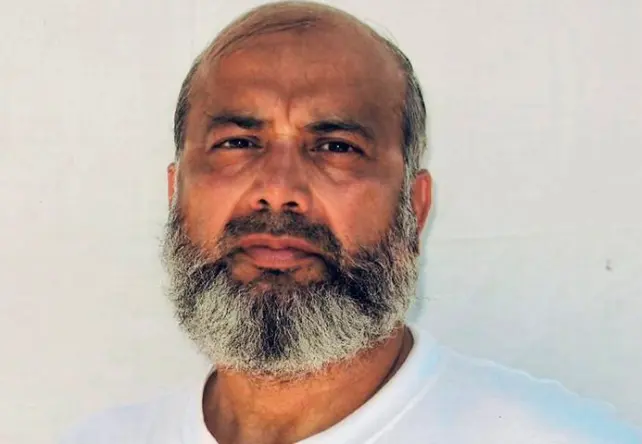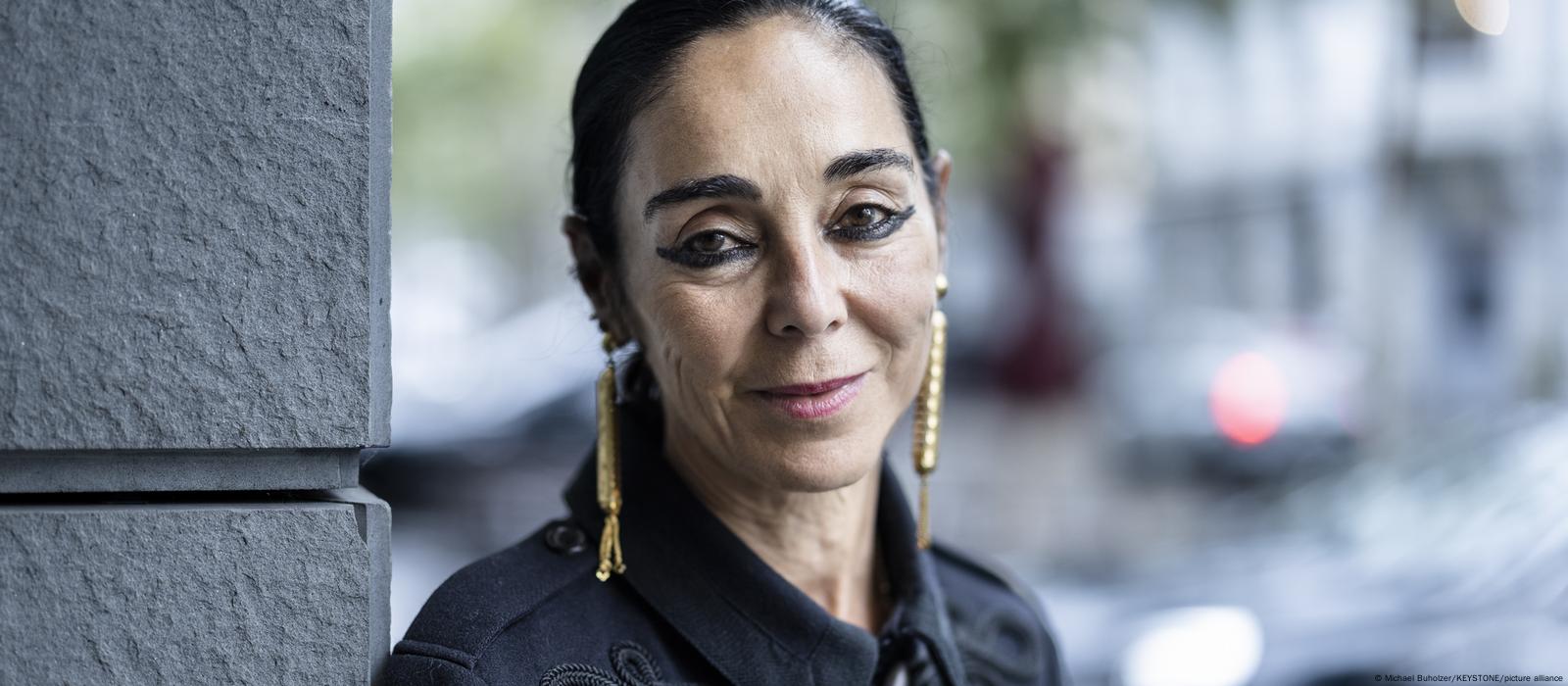A century since the March on Rome, it is important to remember the horrors of Benito Mussolini’s regime. Fascism was morally repugnant — but also a movement based on violent counterrevolution.

Benito Mussolini reviews blackshirt militia in Rome in 1936.
BY STEFANIE PREZIOSO
10.29.2022
Jacobin
A century since the March on Rome, the “return” of Italy’s fascist past has never seemed closer. This month, the Senate elected as its new president Ignazio La Russa, cofounder of the post-fascist Fratelli d’Italia party, just weeks after he declared that “we are all heirs of the Duce.”
In such a context, bringing out a novel about Benito Mussolini — as Antonio Scurati has with his M. trilogy — is a huge responsibility. More than any historical writing, Scurati’s work has become a bestseller, translated into several languages. The responsibility is even greater because Scurati seeks to “bring fascism down to earth, giving real knowledge of it as only literature knows how, when it delves into the details of material life.” M. is thus a “documentary novel”; it deliberately plays on the blurred boundary between history and fiction, on the “intertwining” of the two genres in an era which, Scurati tells us, invites “cooperation between the rigor of historical scholarship and the art of fictional storytelling.”
Does historical writing not imitate fiction, when it fills in the blanks with intelligent narrative, with imagination, with sympathy? Does grasping the past “as it really was” not demand the historian’s ability to immerse himself in other worlds, to make them his own and pass them on to others? Professional historians often prove incapable of speaking to a wider audience, and clumsy when trying to use literary art, which is even more needed with biography or collective biography. From this point of view, Scurati’s three M. books are a masterpiece.
Scurati constructs a cutting, gripping narrative drawing on firsthand sources. He is not afraid to confront the enduring myth of Italiani brava gente (Italians, the good people) — a myth which diminishes Italians’ responsibility for war crimes in World War II. Particularly noteworthy is his description of fascism’s genocidal policy in Libya, to which the second volume dedicates many pages and which still remains an overlooked part of Italian history.
Scurati wanted to “give voice to the thoughts of those who, through their actions, contributed to writing that history.” To do this, he claims that it was necessary to operate without “ideological prejudices.” This is a significant statement in a country where, for decades, historiographical revisionism has found its strength precisely in the claim to produce a “de-ideologized” and “serene” history “without prejudices,” far removed from the “great political passions” of the short twentieth century. Scurati is no exception: he claims that the “anti-fascist prejudice” blocks the ability to analyze fascism, producing a “form of blindness.”
This implies that we ought to overlook the hundreds of studies produced in the heat of the anti-fascist struggle — still today essential to approaching the phenomenon — such as Angelo Tasca’s Rise of Italian Fascism, published on the eve of World War II, from which Scurati nevertheless draws extensively. This is all the more surprising in that the author of M., who describes himself as “democratic, libertarian and progressive,” sees his novel as his “greatest contribution to the re-foundation of anti-fascism,” an anti-fascism that can stand up to new times.
Culturally Produced Ignorance
Awritten work is, like everything else, part of the era in which it was born, the sociohistorical context in which it developed and left its mark. What interest would a work of art have in being stripped out of the world in which it was conceived? Did the French historian Marc Bloch, shot by the Nazis in 1944, not argue that it is impossible to understand the past without looking at the present? The release of Scurati’s work coincides with the centenary of fascism’s arrival in power — a past that seems not to want to pass, in a country where the memory of Mussolini still looms like a threatening shadow, a “ghost.”
The novel also comes out at a time when the return of fascism is on everyone’s lips. The publication of the first volume had coincided with Lega leader Matteo Salvini’s rise to high office (at the time he was Interior Minister), with aggressive policies and open links with neofascist groups, alarming national and international public opinion. The third and last volume — M. Gli ultimi giorni dell’Europa — came out a few days before the election victory, this September 25, of Giorgia’Meloni and her Fratelli d’Italia; a party in whose arteries fascism still circulates and whose logo proudly displays the tricolore flame, representing the still-living spirit of fascism. The noxious atmosphere in which the book appeared was evidenced by the intimidating September 25 article by Alessandro Sallusti, editor of the newspaper Libero, entitled “the prince of the haters,” in reference to the author.
In this context, talking about the “return of fascism” in Italy may seem absurd, as the historian Emilio Gentile said, since fascism never seems to have disappeared. Among other things, Scurati openly takes on the role of revealing the present by evoking certain “surprising and chilling analogies with the modern-day.”
The past as illuminated by the present is part of any literary-creative process of a historical nature — one attentive, as G. W. F. Hegel wrote, to “historical truth” and at the same time “to the customs and intellectual culture of its time.” Scurati insists that “no person, event, speech or sentence narrated in the book is arbitrarily invented,” paying special attention to sources, in the manner of a historian. This is only strengthened by the impression of realism that comes from the inclusion of extracts from archival documents at the end of each chapter. Yet their often-truncated exposition cannot go beyond an illusion of the materiality of the past.
Scurati’s novel, he says, “complements, perhaps, the analytical work of historical research with the synthetic force of narrative” and does not attempt to replace it. From this point of view, M. plays the role of a narrative synthesis of the analyses produced by historians. However — and this will be even more the case when the film based on his novel is released — what Scurati calls the fictual (a mixture of fictional and factual) elaborates a new form of historical thought that breaks away from scholarly history, largely unknown to most people. This new historical thought is called upon to replace it.This is a country where it is still possible to hear that ‘Mussolini did good things, too’; a country where ignorance of the past is commonplace.
It is difficult to ignore the cultural, social, and political environment in which this work emerged. This is a country where it is still possible to hear that “Mussolini did good things, too”; a country where ignorance of the past is commonplace, either because its population is not aware of it or because it does not want to know. An ignorance in the strongest sense, tinged with indifference, has been culturally produced since World War II through the mainstream press and especially television, an extraordinary vehicle of identity and memory. Italy is a country in which, over the last thirty years of the cultural hegemony of the plural right, anti-fascism has been portrayed as sinister, due to its supposedly anti-democratic character and the alleged cruelty of communist violence.
This is not at all a matter of pointing out all the novel’s errors from the impregnable ivory tower of “professional” historians, and reserving the production of historical knowledge to the latter. It is, rather, a matter of questioning M.’s interpretation in the present, of interrogating the relationship between the forms of narrative production that his author favors and the self-consciousness of Italian society. “The future of the past” is at stake, not only its present.
In the first volume, entitled M. Son of the Century, Antonio Scurati decides to relate the rise of fascism from Mussolini’s own perspective. This narrative choice has raised many questions and criticisms — some of them unjustified — of “closeness” to his “character” or of a latent “rehabilitation” of Mussolini. Scurati’s aim, by adopting the fascist leader’s viewpoint, is to tell this story from the inside. In doing so, Scurati draws on the historians Renzo de Felice, George L. Mosse, Zeev Sternhell, and Emilio Gentile, who defended the need for an analysis of fascism “from the inside,” taking its language and myths seriously.
Scurati argues that the fact that he belongs to a generation “born just after the end of all this and just before the beginning of all the rest” allows him to “re-appropriate the explosive twentieth-century narrative material, on the basis of [his own] non-belonging to it.” Born in 1969, he would thus be one incarnation of what he calls the “literature of inexperience,” as represented in this “post-historical novel.” The author would thus finally be freed from any ideological dogmatism with respect to the generation that preceded him, free to find the truth or at least to elaborate a truth: “The equidistance (certainly not the equivalence) of the post-historical author,” he writes, “with respect to the point of view of victims and executioners, therefore his free choice in narrative focus, directly descends from the transcendental of inexperience.”
Scurati’s approach to the literature of inexperience seems characteristic of what Eric Hobsbawm had called “the destruction of the past, or rather of the social mechanisms that link one’s contemporary experience to that of earlier generations,” effectively freeing the younger generation from the categorical imperative of remembering the vanquished, i.e. taking their defeats on board in order to transform them into a “revolutionary” force in the present. The admittedly important distinction that the author makes between “equidistance” and “equivalence” cannot, however, alone resolve the question of his relationship with his characters, the reader to whom he addresses himself, and what his text “postulates” to them.
The reader of M., exposed without mediation to Mussolini’s tale in volume one, is led to experience fascism’s rise from within the belly of the beast. The undeniable strength of Scurati’s writing lies in the description “from below” of the years following World War I; a particularly intense period that must be analyzed hour by hour, region by region, city by city, neighborhood by neighborhood in the attempt to “get to grips with” fascism through its “developments.” The narrative is undoubtedly effective. Using the aesthetics of “horror,” Scurati elicits repentance, not responsibility. He succeeds in captivating a wide readership by immersing them in the everyday life of fascism. However, the narrative of fascism’s rise to power leaves little room for the perspective needed to understand a complex and vivid phenomenon in the collective memory of Italy, Europe, and the world.What is fascism? The answer, according to Scurati, is to be found in its moral and psychological character.
Its everyday developments, seen through the necessarily myopic prism of a “fascination with catastrophe,” attach the definition of fascism to the contingent and ephemeral plane of circumstance and to the reciprocal effects of violence and fear. What is fascism? The answer, according to Scurati, is to be found in its moral and psychological character, which cannot be separated from the “moods” of the slums. Fascists are constantly attached to their plebeian social origins — Roberto Farinacci, “son of the railwayman,” and Mussolini, “son of the blacksmith,” stubbornly repeated, as if these indications were the best way to grasp the phenomenon. The plebeian nature of the “fascists” reinforces the idea of a “revolutionary” fascism: “the revolution will not be made by the communists, it will be made by the owners of two rooms and a kitchen in a suburban apartment block.” A point of view from the inside that is never questioned in Scurati’s three volumes.
From a Crocean perspective, fascism is also seen as a degenerative moral disease. The second volume, which opens with a Mussolini bent in two by the pain of blood and shit, is the most typical example. The image of the virus appears many times, a virus that “infects thousands of postal employees ready to set fire to the labor halls.” The terror that this people armed with sticks inspires is therefore not only related to the violence it produces, but to what it represents in terms of physical and psychic pathology located in the depths of society, in its underbelly, in its basest instincts.
The fear of the “crowd” that “instinctively advances” is coupled with the image of a Benito Mussolini presented as a “superman generated from the belly of the people and not from a privileged caste.” A Mussolini who “despises and fears his own squadrists [an attitude] which is largely reciprocated.” A Mussolini who portrays his troops as “enriched beggars, stormtroopers turned officials” and Italians as “cowards and weaklings.” A Mussolini who hesitates to turn back (“but by now the circle of hatred is tightening on all sides. Perhaps, if he could, he would turn back. But it is too late.” A Mussolini who “is protected from the demeaning spectacle of human misery by a strange kind of hypermetropia: he does not see his peer, his neighbor, the little people, or, if he does see them, they appear blurred, indistinct, insignificant.” A Mussolini who supposedly regretted the death of a man like Giacomo Matteotti, the Socialist MP murdered by Blackshirts 1924.
A man alone in the face of the madness he set in motion: “he should tell of a head of state, idolized by the crowds, who slips day after day into the unenviable fate of the most radical distrust of anyone and into the even more chilling condemnation of having to cultivate an ever greater, absolute, abnormal trust in himself.” A man whose stature has shrunk as much as the distance between his index finger and thumb (hence the stylized lowercase m in the title of volume three) in approaching Hitler and who is “afraid.” The same fear that “twenty years earlier, when deftly orchestrated, had hoisted him to power” was turning against him, driving him to violence and to “throw the Italian people into the carnage of a new world conflict.”
In the third volume, which covers the period from the Racial Laws of 1938 to Italy’s entry into World War II, Scurati’s point of view becomes increasingly clear. He presents a Mussolini in “ecstasy,” fascinated by fear, the “most powerful of political passions,” instilled in him by a “bloodthirsty” Hitler, the “Nazi demon” and his court made up of a “plebeian, upstart, ill-mannered rabble” — yet a Mussolini at the same time a succubus; an aging, fattened, restless leader anxious for the “fate” of “his” people. Scurati here leans toward that reading that makes excuses for Italian fascism, caught up in the orbit of Nazi Germany, an old cliché that casts the alliance with Hitler as accidental, a “fatal error” made on the grounds that it is “better” that Hitler be “with us than against us.”
Meanwhile the racial laws are presented as a “diplomatic instrument,” a pledge given to this alliance, a “reassurance” of the steadfastness of a lasting agreement. This revisionist reading is reinforced by the fact that Scurati’s reconstruction of the course of fascism leaves aside six years (from 1932 to 1938), thus missing out the colonization of Ethiopia — an important transition between colonial racism and the antisemitism at home conceived as an instrument for the “regeneration” of Italians.In the narrative of fascism’s rise to power, as in that of the consolidation of its regime, Scurati gives little space to the economic, political, social, and cultural conditions that provided its basis.
The basic criticism of fascism thus appears abstractly moral because almost only violence and fear dominate. In the narrative of fascism’s rise to power, as in that of the consolidation of its regime, Scurati gives little space to the economic, political, social, and cultural conditions that provided its basis, its political program and ideology, and the regime it established. Historian Giulia Albanese is right to point out that “the pages on the march on Rome show that the event was reversible.” Scurati rightly suggests that fascism was a possible but hardly automatic outcome of contemporary social conflict, and that therefore the convergence between the ruling class and the counterrevolution — essential for fascism’s arrival in power — could not be taken as inevitable.
Yet the object of the author’s attention is not, in the words of the historian Charles S. Maier, “crisis capitalism armed with a truncheon,” but rather, and only at times, the inadequacy of the traditional ruling class, “people from a museum,” composed of an “Italian bourgeoisie that is the spiritual enemy of fascism” in the face of the new situation that opened up in March 1919. The description of the king as a “prisoner of war” and of liberal prime minister Giovanni Giolitti’s “partial, laborious, contradictory attempt to transform an ancient and archaic country into a modern democracy” seem to exonerate the liberal state, at least in part.
The Absent Oppressed
Scurati has in numerous interviews maintained that “the novel generates a precise and firm historical, moral and civil judgement condemning fascism. And it does so precisely because it does not start from an ideological prejudice.” The whole question this poses is the definition of anti-fascism that results from the novelist’s “third-party” but not “neutral” exposition. What does Scurati want to tell us about anti-fascism in the past and, perhaps more importantly for him, about its adaptation to new times?
The question brings us back to the political role of the “historical” novel. In the mid-1930s, György Lukács devoted some illuminating pages to the anti-fascist novel, a literature that, he said, marked the “break between the writer and the life of the people.” He wrote that “It is above all prejudice that lives in the people, in the masses, the principle of irrationality, of what is purely instinctive, against reason. With such a conception of the people, humanism destroys its best anti-fascist weapons.” The Hungarian philosopher then called for the “unmasking of fascism’s hostility” toward the oppressed in order to “protect the creative forces of the people” because “the great ideas and actions that humanity has produced so far originated in popular life.”
After reading M.’s three volumes, there are no doubts as to its moral condemnation of fascism — despite the limitations and neglected elements highlighted above. But for Scurati, the anti-fascist battle is essentially a struggle between reason and brutal and barbaric irrationality: “Today we are at a crossroads: we must choose between culture, democracy and progress, or throw ourselves into the arms of despotism, blindness and obedience.”
By reducing the anti-fascist battle, this struggle for eternity (as Carlo Rosselli called it), to a struggle between progress and reaction, between democracy (but which one?) and despotism, Scurati leaves no concrete space for the creative force of the oppressed. Clearly, anti-plebeian class prejudices color Scurati’s fresco: the landless peasants are described as “idiotic grey oxen”; the “crowd” is seen as “docile, primitive”; the people seem to be guided by their instincts, their stomachs, their “humors,” of which Mussolini is said to have a “formidable intelligence”; a people at best absent, at worst consenting out of laziness. “Yes, the majority of Italians,” Scurati writes, to account for the atmosphere following the assassination of socialist leader Matteotti, “horrified by the crime, would like the fall of the regime to reclaim their ghost-infested homes. But, then, around dinnertime, the demands of life prevail. Morality is not one of them. The country is opaque, its sense of justice is sluggish, blurred.”
In this fresco, the anti-fascists from below appear almost exclusively in their role as victims, killed, beaten, humiliated, like the “two poor people” condemned for insulting the Duce, who are presented as “meek and harmless animals.” The antifascist émigré circles in Nice in which Gino Lucetti — who tried to kill Mussolini — developed are presented as: “a court of miracles of poor emigrants, communists, anarchists, revolutionaries, outcasts, the beaten, the expelled, men who cheated hunger in front of the tables of lowly taverns, among inverts, thieves and whores, in a laudable and, at the same time, sublime mixture of drunkenness, vain hopes of redemption, desperate idealisms and chronic, ferocious, destitution.”
Even more significant in this regard is the fact that anti-fascism disappears in the third volume, with Scurati deciding to leave aside the most important moment of the anti-fascist struggle abroad. The 1930s proved to be a decisive test for antifascism. Ten years of the “academy of exile” in Paris had made only one alternative possible: death or “redemption.” Scurati deals with the end of the parable, the republican defeat in the Spanish Civil War, summed up as an “internecine war between republicans and Francoists.” Again, the anti-fascists are those immediately executed on Mussolini’s orders but not those who fought with weapons in hand, “today in Spain and tomorrow in Italy”; those who called for a preemptive war and an anti-fascist revolution; those who needed Spain more than Spain needed them, as Emilio Lussu wrote.How can one understand fascism without considering its profoundly counterrevolutionary dimension?
Everything is as if the oppressed could not play any active role in the fight against a movement and a regime built precisely in opposition to their struggles. Scurati ignores the oppressed, perhaps as a function of this double fear: the people who are afraid, but also the fears spurred by this “formless, stupid and apathetic mass.” Yet how is it possible to contemplate the anti-fascist struggle while ignoring the subaltern, and vice versa, how can one understand fascism without considering its profoundly counterrevolutionary dimension? Because fascism did indeed wage war against the subaltern.
Under Scurati’s pen, the emancipatory struggles of the biennio rosso (the “two Red Years” of strikes and occupations in 1919 and 1920) appear as “revolutionary delusions” that ruined Italy through a “fury of strikes,” suggesting that the “revolutionary” outrages of the labor movement somehow set off the powder keg. Scurati has Mussolini say that “[Communists] did not start this civil war but they will finish it. It is a question of making violence ever more intelligent, of inventing surgical violence.”
Hope guided the steps of those who took part in the strike waves in the immediate interwar period, demanding not only wage increases, shorter working hours, and an end to food shortages, but also to change the fate of the world, to break the chains. Everything seemed possible when in Russia, the first socialist revolution finally seemed to open new vistas. Scurati does not speak of this enthusiasm but dwells at length on the “millions of Italians [who] had stopped hoping for change and began to feel threatened by it. The chanting of the squares choked into a chorus. A shout that no longer begged the future to finally redeem the present, but implored it to remain uncreated. Not a prayer but an exorcism.”
At times Scurati even equates (pre)revolutionary violence and counterrevolution; his ahistorical and abstractly ethical critique of violence allows him to confuse the opposing camps: “Demonstrations, devastation, fires are everywhere. On all sides. The escalation culminated on a tram in Rome where, on September 12, policeman Giovanni Corvi murdered fascist trade unionist Armando Casalini with three revolver shots while the child’s eyes were still open.” Leading Communist Nicola Bombacci serves this purpose perfectly. The man the author describes as “the man from Moscow,” Lenin’s “Italian confidant” (it is unclear on what basis), who was later to become one of Mussolini’s ardent supporters, serves as a link between the two violent sides of the same “European civil war” — about which, however, Scurati says nothing.
For counterrevolution was not only organized in Italy but everywhere after the Russian October Revolution. Anti-communism not only targeted the newborn Soviet state, on which all manner of fantasies were focused, but was also expressed in hostility toward the dominated and an elitist conception of democracy, the result of what Peter Gay would call the culture of hatred. The European democracies that emerged from World War I supported reactionary solutions to deal with a communism, which was seen as the much greater danger.The author’s ahistorical and abstractly ethical critique of violence allows him to confuse the opposing camps.
As for the anti-fascist parties, in M. all that can be discerned is the “blindness” of their leaders: “The factional hatreds, the slavery to formulas, the ideological blindness, the language that turns time and again to formal issues, to pure logic, the eternal wheel of personal rivalries, the deafness to the din of the world, to the promises of the dawn.” The twenty-first century Scurati forgets to portray anti-fascism from the inside, day by day, as a concrete movement anchored in its time, with its mistakes but also its strengths. This severely hems in the complexity of the situation, even at a particularly intense phase of the political struggle.
Certainly, the anti-fascist opposition proved incapable of adapting its struggle to the new political configuration. This was an inadequacy linked at worst to a radical misunderstanding, and at best to a narrow conception of fascism as a phenomenon. Italian socialism undoubtedly proved disastrously inadequate faced with the post–World War I situation in Italy. But dismissing the foundation of the Communist Party in 1921 — the result of serious reflection, careful elaboration and intense political and social action — as a “demented split” or reducing the history of the Italian workers’ movement on the eve of Mussolini’s rise to “factional hatreds” hardly allows one to go beyond value judgements, of little use for a refoundation or consolidation of anti-fascism.
The blindness denounced by Scurati does not help us understand what should have been done, or rather, what should be done (the famous unveiling of the present) in such a situation. Unless we consider that only the sacrifice of a few individual heroes (Matteotti is the only totally positive figure in history) can redeem all Italy.
Under Scurati’s pen, the subalterns turn from bearers of emancipation into willing “victims” or sacrificial heroes. From this perspective, despite its declared objective, M. cannot be a basis for refounding anti-fascism. Its “victimizing” reading of the opposition of those times cannot serve the collective remembrance and redemption of the victims of past struggles. By ignoring the properly revolutionary dimension of antifascism (and the counterrevolutionary dimension of fascism), M. cannot fulfil the revolutionary critique of the present, which is the only one capable of confronting the new fascism. M. strives to chase after the world that was, without understanding the world that really is.
Stefanie Prezioso is associate professor at Lausanne University and author of numerous works on European anti-fascism.













